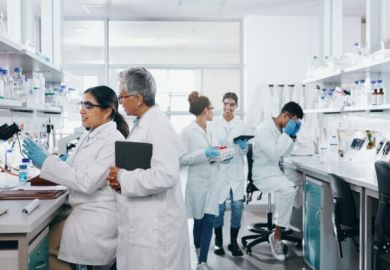Food poisoning is common. Even in the richest countries diarrhoea and vomiting caused by microbes in meals affect nearly everyone sooner or later. From time to time there are dramatic outbreaks that become media events. Sometimes people die.
The inhabitants of developed countries can afford holidays abroad. Food poisoning contracted on such trips is common enough to have prompted some big British legal firms to create departments specialising in seeking redress from travel firms and hotels for unfortunates who spent most of their holiday on the toilet. But not only does the public look to lawyers to help them apportion blame and deliver punishment after their Fawlty Towers experience, they expect politicians to act in their interests as well. Retribution for failure on their part has been harsh. It is probable that bovine spongiform encephalopathy has played a significant role in keeping politicians bottom of the list in pools of public opinion on the esteem afforded professionals.
So food poisoning is important. But its microbiology is exciting and challenging too. Since the basic techniques of bacteriology such as the Petri dish and the agar culture medium were well established before the end of the 19th century, it might be thought that maturity might have made it dull. Not so. In the past quarter of a century, molecular methods have greatly improved our ability to track the spread and evolution of pathogens as well as explaining their ability to cause disease.
The pathogens have changed as well. Some, like the non-typhoid salmonellas, have been known for a long time, but in the past half century they have been helped enormously by intensive farming to spread and become common in cattle and poultry. The origin of others, such as BSE, is more recent. Its paternity is obscure. But there can be no doubt it was spread by changes in farming practice that were thought to be risk free.
Other new foodborne pathogens are harder to explain. It was anticipated that bacterial genome sequencing would help explain evolutionary origins and pathogenicity. But the results so far have been better at raising questions than answers. The sequence of E.coli O157, the cattle organism that is non-pathogenic in its host but virulent for man, tells us it is very different from human E.coli strains but does not explain where it came from and why it started causing disease only in the early 1980s.
How well does Foodborne Pathogens and Disease address these issues? Its declared scope includes emerging pathogens, microbial drug resistance, control strategies and dissemination of educational material. It has got off to a good start. Its reviews (on Mycobacterium avium paratuberculosis, Vibrio parahemolyticus , foodborne virus vaccines, contaminated pig feed and antibiotic resistance) are authoritative. Its papers are a nice mix of methods and techniques, surveys, food-risk analyses and case reports. Its breadth and depth are appropriate for a subject that requires a holistic approach. I enjoyed in particular the account from Brazil of a widespread Staphylococcus enterotoxin outbreak at the ordination ceremony of a priest.
Hugh Pennington is professor of microbiology, Aberdeen University.
Foodborne Pathogens and Disease
Editor - Stephen P. Oliver
Publisher - Mary Ann Liebert Quarterly
Price - Institutions $618.00 Individuals $371.00
ISSN - 1535 3141
Register to continue
Why register?
- Registration is free and only takes a moment
- Once registered, you can read 3 articles a month
- Sign up for our newsletter
Subscribe
Or subscribe for unlimited access to:
- Unlimited access to news, views, insights & reviews
- Digital editions
- Digital access to THE’s university and college rankings analysis
Already registered or a current subscriber?



